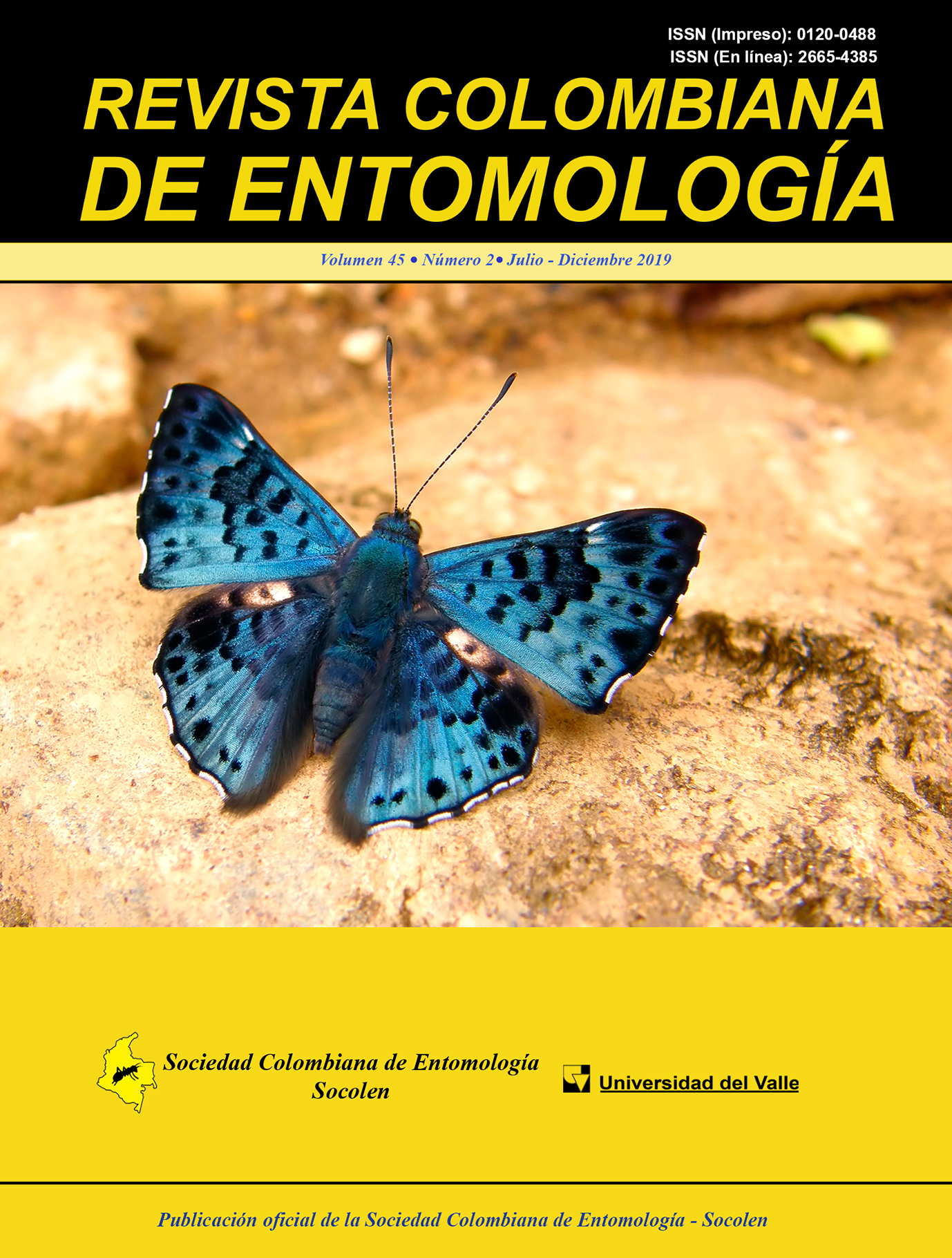Insects associated to yellow pitaya crops (Selenicereus megalanthus) on Inzá Cauca, Colombia
Keywords:
Dasiops, ecology, plant-insect relationships, Colombia, Neotropical regionMain Article Content
In the municipality of Inzá (Cauca, Colombia) the profitability of the main economic resource, coffee crops, decreased. As an alternative, yellow pitaya crops were established, but knowledge of the possible phytosanitary limitations for this crop in this region was absent. This study presents the entomofauna associated with yellow pitaya crops in three plantations of Inzá that contrast in agronomic and landscape features. Direct sampling of the insects found on each structure of the plant and sampling was done using entomological nets from directly under the plants to 50 cm away. Abiotic factors and indices of ecological diversity were considered. With direct sampling, 58 families were recognized; of these, Formicidae (n = 22), Coreidae (n = 11) and Lonchaeidae (n = 7) were most prevalent. Five orders and 56 families of insects were collected using entomological nets. The plants with the highest density of cladodes favored the Lonchaeidae (τ = 1.0; P = 0.00), Formicidae (τ = 1.00; P = 0.007) and Cicadellidae (τ = 1.00; P = 0.00) families. Insects from the Lonchaeidae family benefitted from the positive correlation between rainfall (τ = 1.00; P = 0.00) and temperature (τ = 1.00; P = 0.00). Damage associated with Dasiops spp. (Diptera) was not found. The presence of D. saltans was not confirmed because all the specimens collected were males. The Margalef (DMg) = 7.42; Shannon-Wiener (H ‘) = 3.217 (Alpha) and Whittaker (βw) = 1.0; and Routledge (βr) = 0.25 (Beta) diversity indices represented a large variety of beneficial insect families. A system of regular entomological surveillance and technical support should be established for producers with aim of providing long-term economic viability for this crop in the municipality.
Downloads

This work is licensed under a Creative Commons Attribution-NonCommercial-ShareAlike 4.0 International License.
Authors retain the copyright on their work and are responsible for the ideas expressed in them. Once a manuscript is approved for publication, authors are asked for a publication license for the term of legal protection, for all territories that allows the use, dissemination and disclosure of the same.

